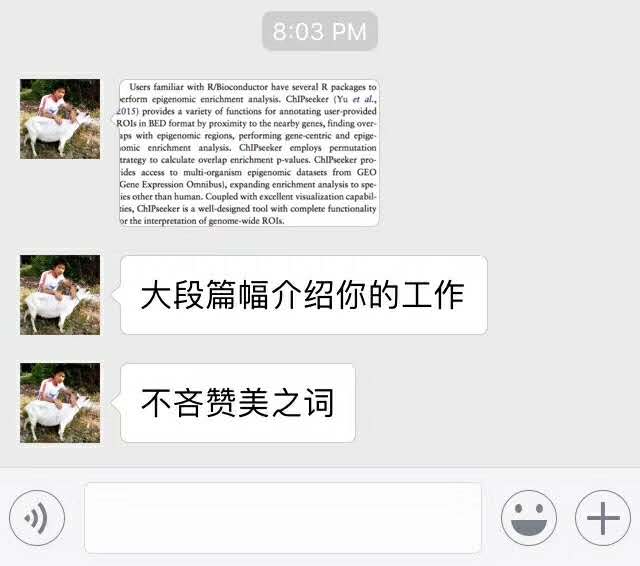ChIPseeker系列文章已经介绍了很多内容,包括注释的方方面面,也包括强大的可视化功能(《CS6: ChIPseeker的可视化方法(中秋节的视觉饕餮)》)。
今天要介绍一下数据挖掘,从大量已有的数据来产生新的hypothesis。正如我在ChIPseeker的文章里写的:
There are increasing evidences shown that combinations of TFs are important for regulating gene expression (Perez-Pinera et al., 2013; Zhu et al., 2008). However, systematically identification of TF interactions by ChIP-seq is still not available. Even if a specific TF binding is essential for a particular regulation was known, we do not have prior knowledge of all its co-factors. There are no systematic strategies available to identified un-known co-factors by ChIP- seq.
并没有方法可以大规模地预测未知的共同调控因子,而数据挖掘就是要给我们这种预测的能力。
我当年在写ChIPseeker的时候,我有纠结是写篇Bioinformatics的application note呢,还是写篇长文灌水NAR,毕竟NAR影响因子高一点,最后还是发了Bioinformatics,因为我没钱,囧,Bioinformatics不要版面费啊。然后限于篇幅,ChIPseeker有大量可视化的函数,我在文章中一张图都没放!!!如果当时决定发NAR的话,这个数据挖掘这一块我就会写多点。
Continue reading
